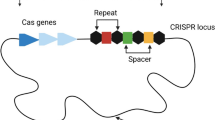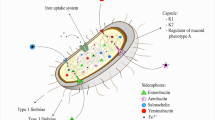Abstract
Infectious diseases are the leading causes of death worldwide. Hence, there is a need to develop new antimicrobial agents. Traditional method of drug discovery is time consuming and yields a few drug targets with little intracellular information for guiding target selection. Thus, focus in drug development has been shifted to computational comparative genomics for identifying novel drug targets. Leptospirosis is a worldwide zoonosis of global concern caused by Leptospira interrogans. Availability of L. interrogans serovars and human genome sequences facilitated to search for novel drug targets using bioinformatics tools. The genome sequence of L. interrogans serovar Copenhageni has 5,124 genes while that of serovar Lai has 4,727 genes. Through subtractive genomic approach 218 genes in serovar Copenhageni and 158 genes in serovar Lai have been identified as putative drug targets. Comparative genomic approach had revealed that 88 drug targets were common to both the serovars. Pathway analysis using the Kyoto Encyclopaedia of Genes and Genomes revealed that 66 targets are enzymes and 22 are non-enzymes. Sixty two common drug targets were predicted to be localized in cytoplasm and 16 were surface proteins. The identified potential drug targets form a platform for further investigation in discovery of novel therapeutic compounds against Leptospira.
Similar content being viewed by others
References
Chopra I, Schofield C, Everett M, O'Neill A, Miller K, Wilcox M, Frère JM, Dawson M, Czaplewski L, Urleb U, Courvalin P (2008) Treatment of healthcare-associated infections caused by Gram-negative bacteria: a consensus statement. Lancet Infect Dis 8:133–139
Silva EF, Medeiros MA, McBride AJ, Matsunaga J, Esteves GS, Ramos JG, Santos CS, Croda J, Homma A, Dellagostin OA, Haake DA, Reis MG, Ko AI (2007) The terminal portion of leptospiral immunoglobulin-like protein LigA confers protective immunity against lethal infection in the hamster model of leptospirosis. Vaccine 25:6277–6286
Bharti AR, Nally JE, Ricaldi JN, Matthias MA, Diaz MM, Lovett MA, Levett PN, Gilman RH, Willig MR, Gotuzzo E, Vinetz JM (2003) Leptospirosis: a zoonotic disease of global importance. Lancet Infect Dis 3:757–771
Trueba G, Zapata S, Madrid K, Cullen P, Haake D (2004) Cell aggregation: a mechanism of pathogenic Leptospira to survive in fresh water. Int Microbiol 7:35–40
Levett PN (2001) Leptospirosis. Clin Microbiol Rev 14:296–326
Cacciapuoti B, Vellucci A, Ciceroni L, Pinto A, Taggi F (1987) Prevalence of leptospirosis in man: a pilot survey. Eur J Epidemiol 3:137–142
Everard CO, Hayes RJ, Edwards CN (1989) Leptospiral infection in school children from Trinidad and Barbados. Epidemiol Infect 103:143–156
Faine S, Adler B, Bolin C, Perolat P (1999) Appendix 2 species and serovar list. In: Leptospira and leptospirosis, 2nd edn. Medisci, Melbourne, Australia, pp 138–139
Farr RW (1995) Leptospirosis. Clin Infect Dis 21:1–6
Guidugli F, Castro AA, Atallah (2000) Antibiotics for preventing leptospirosis. Cochrane Database Syst Rev 4:CD001305
Wang Z, Jin L, Wegrzyn A (2007) Leptospirosis vaccines. Microb Cell Fact 6:39
Umamaheswari A, Pradhan D, Priyadarshini IV, Subramanyam G (2008) In silico putative drug targets in Leptospira interrogans and homology modeling of UDP-N-acetylglucosamine 1-carboxyvinyltransferase MurA. Gen Med 2:295
Anishetty S, Pulimi M, Pennathur G (2005) Potential drug targets in Mycobacterium tuberculosis through metabolic pathway analysis. Comput Biol Chem 29:368–378
Ren SX, Fu G, Jiang XG, Zeng R, Miao YG, Xu H, Zhang YX, Xiong H, Lu G, Lu LF, Jiang HQ, Jia J, Tu YF, Jiang JX, Gu WY, Zhang YQ, Cai Z, Sheng HH, Yin HF, Zhang Y, Zhu GF, Wan M, Huang HL, Qian Z, Wang SY, Ma W, Yao ZJ, Shen Y, Qiang BQ, Xia QC, Guo XK, Danchin A, Saint Girons I, Somerville RL, Wen YM, Shi MH, Chen Z, Xu JG, Zhao GP (2003) Unique physiological and pathogenic features of Leptospira interrogans revealed by whole-genome sequencing. Nature 422:888–893
Nascimento AL, Verjovski-Almeida S, Van Sluys MA, Monteiro-Vitorello CB, Camargo LE, Digiampietri LA, Harstkeerl RA, Ho PL, Marques MV, Oliveira MC, Setubal JC, Haake DA, Martins EA (2004) Genome features of Leptospira interrogans serovar Copenhageni. Braz J Med Biol Res 37:459–477
Zhang R, Ou HY, Zhang CT (2004) DEG: A database of essential genes. Nucleic Acids Res 32:D271–D272
Altschul SF, Madden TL, Schäffer AA, Zhang J, Zhang Z, Miller W, Lipman DJ (1997) Gapped BLAST and PSI BLAST: a new generation of protein database search programs. Nucleic Acids Res 25:3389–3402
Kanehisa M, Goto S (2000) KEGG: Kyoto Encyclopedia of Genes and Genomes. Nucleic Acids Res 28:27–30
Lu Z, Szafron D, Greiner R, Lu P, Wishart DS, Poulin B, Anvik J, Macdonell C, Eisner R (2004) Predicting subcellular localization of proteins using machine-learned classifiers. Bioinformatics 20:547–556
Gardy JL, Laird MR, Chen F, Rey S, Walsh CJ, Ester M, Brinkman FSL (2005) PSORTb v.2.0: expanded prediction of bacterial protein subcellular localization and insights gained from comparative proteome analysis. Bioinformatics 21:617–623
World Health Organization (2002) Deaths by cause, sex and mortality stratum in WHO Regions, estimates for 2001. The World Health Report
Spellberg B, Powers JH, Brass EP, Miller LG, Edwards JE Jr (2004) Trends in antimicrobial drug development: implications for the future. Clin Infect Dis 38:1279–1286
Bansal AK (2005) Bioinformatics in microbial biotechnology—a mini review. Microb Cell Fact 4:19
Allsop AE, Brooks G, Bruton G, Coulton S, Edwards PD, Hatton IK, Kaura AC, McLean SD, Pearson ND, Smale TC, Southgate R (1995) Penem inhibitors of bacterial signal peptidase. Bioorganic Bioorg Med Chem Lett 5:443–448
Sakharkar KR, Sakharkar MK, Chow VT (2004) A novel genomics approach for the identification of drug targets in pathogens, with special reference to Pseudomonas aeruginosa. In Silico Biol 4:355–360
Dutta A, Singh SK, Ghosh P, Mukherjee R, Mitter S, Bandopadhyay D (2006) In silico identification of potential therapeutic targets in the human pathogen Helicobacter pylori. In Silico Biol 6:43–47
Chong CE, Lim BS, Nathan S, Mohamed R (2006) In silico analysis of Burkholderia pseudomallei genome sequence for potential drug targets. In Silico Biol 6:341–346
Barh D, Kumar A (2009) In silico identification of candidate drug and vaccine targets from various pathways in Neisseria gonorrhoeae. In Silico Biol 9:225–231
Rakesh S, Pradhan D, Umamaheswari A (2009) In silico approach for future development of subunit vaccines against Leptospira interrogans serovar Lai. Int J Bioinformatics Res 1:85–92
Raetz CR, Whitfield C (2002) Lipopolysaccharide endotoxins. Annu Rev Biochem 71:635–700
Taylor PL, Blakely KM, de Leon GP, Walker JR, McArthur F, Evdokimova E, Zhang K, Valvano MA, Wright GD, Junop MS (2008) Structure and function of sedoheptulose-7-phosphate isomerase, a critical enzyme for lipopolysaccharide biosynthesis and a target for antibiotic adjuvants. J Biol Chem 283:2835–2845
El Zoeiby A, Sanschagrin F, Levesque RC (2003) Structure and function of the Mur enzymes: development of novel inhibitors. Mol Microbiol 47:1–12
Strancar K, Blanot D, Gobec S (2006) Design, synthesis and structure—activity relationships of new phosphinate inhibitors of MurD. Bioorg Med Chem Lett 16:343–348
Humljan J, Kotnik M, Contreras-Martel C, Blanot D, Urleb U, Dessen A, Solmajer T, Gobec S (2008) Novel naphthalene-N-sulfonyl-D-glutamic acid derivatives as inhibitors of MurD, a key peptidoglycan biosynthesis enzyme. J Med Chem 51:7486–7494
Perdih A, Kovac A, Wolber G, Blanot D, Gobec S, Solmajer T (2009) Discovery of novel benzene 1, 3-dicarboxylic acid inhibitors of bacterial MurD and MurE ligases by structure-based virtual screening approach. Bioorg Med Chem Lett 19:2668–2673
Yu HB, Srinivasa Rao PS, Lee HC, Vilches S, Merino S, Tomas JM, Leung KY (2004) A Type III secretion system is required for Aeromonas hydrophila AH-1 pathogenesis. Infect Immun 72:1248–1256
Sandkvist M (2001) Type II secretion and pathogenesis. Infect Immun 69:3523–3535
Barrett JF, Hoch JA (1998) Two-component signal transduction as a target for microbial anti-infective therapy. Antimicrob Agents Chemother 42:1529–1536
Cai XH, Zhang Q, Shi SY, Ding DF (2005) Searching for potential drug targets in two-component and phosphorelay signal-transduction systems using three-dimensional cluster analysis. Acta Biochim Biophys Sin 37:293–302
Acknowledgments
The study was supported by grants from DBT, Ministry of Science and Technology, Government of India, New Delhi. We are grateful to Dr. B. Vengamma, Director for providing constant support and encouragement for research at SVIMS Bioinformatics Centre, where this work has been performed. We thank Prof. K. Venkateswarlu (SK University, Anantapur) for critically reading the manuscript.
Author information
Authors and Affiliations
Corresponding author
Rights and permissions
About this article
Cite this article
Amineni, U., Pradhan, D. & Marisetty, H. In silico identification of common putative drug targets in Leptospira interrogans . J Chem Biol 3, 165–173 (2010). https://doi.org/10.1007/s12154-010-0039-1
Received:
Accepted:
Published:
Issue Date:
DOI: https://doi.org/10.1007/s12154-010-0039-1




